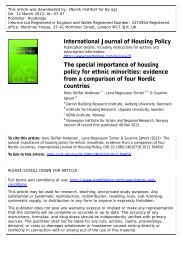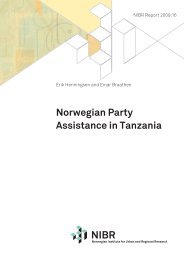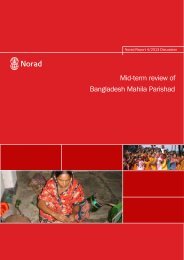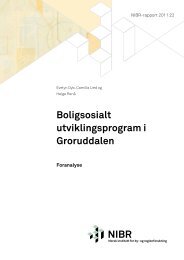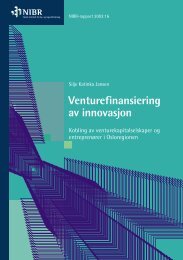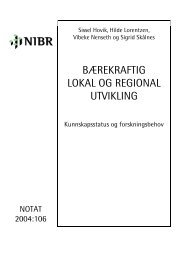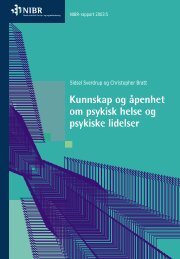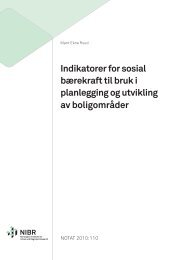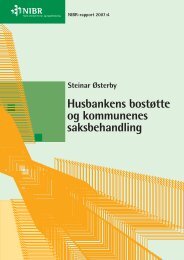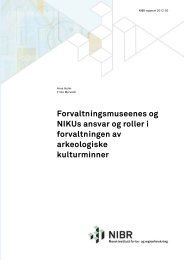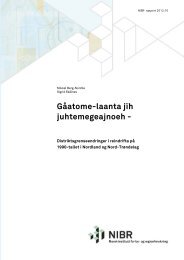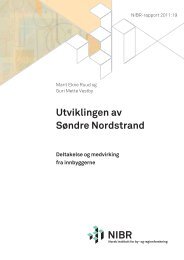Evaluation of the Southern and Eastern Africa Regional Centre for ...
Evaluation of the Southern and Eastern Africa Regional Centre for ...
Evaluation of the Southern and Eastern Africa Regional Centre for ...
- No tags were found...
Create successful ePaper yourself
Turn your PDF publications into a flip-book with our unique Google optimized e-Paper software.
maintenance by <strong>the</strong> UoZ is limited. This <strong>the</strong>re<strong>for</strong>e means that <strong>the</strong> funding has given<strong>the</strong> <strong>Centre</strong> a critical degree <strong>of</strong> autonomy, which makes <strong>the</strong>m much less dependent on<strong>the</strong> UoZ.UoZ leadership said in interviews that <strong>the</strong>y might cover some <strong>of</strong> <strong>the</strong> costs if RNE isdecreasing <strong>the</strong> funding. Though <strong>the</strong> UZ leadership clearly appeared committed tosupporting <strong>the</strong> <strong>Centre</strong> <strong>and</strong> recognised it as an asset, <strong>the</strong> recurrent budgets <strong>for</strong> <strong>the</strong> UZas a whole is extremely limited. In 2011, <strong>for</strong> example, <strong>the</strong> entire recurrent budget <strong>for</strong>UoZ was $1, 1 million. Faced by several competing dem<strong>and</strong>s <strong>for</strong> <strong>the</strong> limited budget,such as laboratories <strong>and</strong> o<strong>the</strong>r infrastructure, it is extremely unlikely that such highst<strong>and</strong>ards <strong>of</strong> <strong>the</strong> <strong>Centre</strong>’s buildings <strong>and</strong> <strong>the</strong>ir infrastructure (i.e. library, teachingfacilities, <strong>and</strong> <strong>of</strong>fices) will be maintained by UoZ alone. Fur<strong>the</strong>rmore, <strong>the</strong> continuingpolitically volatile situation in Zimbabwe also places severe restrictions on <strong>the</strong>likelihood <strong>of</strong> adequate future funding from UoZ. In <strong>the</strong> event <strong>of</strong> RNE fundingdecreasing, or, worse, ending, it will clearly have a very dramatic impact on <strong>the</strong>likelihood <strong>of</strong> functioning as a regional programme. It is almost certain that <strong>the</strong><strong>Centre</strong> will cease to function as a regional entity if it is not able to get o<strong>the</strong>rsubstantial funding from donors. This raises several overlapping issues concerningsustainability.434.1.3 EfficiencyIt is clearly very complicated to compare <strong>the</strong> efficiency <strong>of</strong> SEARCWL’s Mastersprogramme in comparison to o<strong>the</strong>r courses funded by Norway in <strong>the</strong> global South.Given first <strong>the</strong> variety <strong>of</strong> different costs – such as cost <strong>of</strong> living in different countrycontexts <strong>and</strong> differences in salaries <strong>and</strong> shifting Norwegian components (<strong>and</strong> also in<strong>the</strong> case also <strong>of</strong> SEARCWL funding <strong>for</strong> some research activities <strong>and</strong> materials),student bursaries, regional components etc. <strong>the</strong>n comparing like <strong>for</strong> like is highlyproblematic. Second, <strong>the</strong>re are very different kinds <strong>of</strong> courses, both in terms <strong>of</strong>length <strong>and</strong> nature <strong>of</strong> <strong>the</strong> course itself (e.g. whe<strong>the</strong>r classroom or laboratory basedrequiring specific equipment etc.). In order to say something on efficiency, however,we provide what must be regarded as only a rough comparison with <strong>the</strong> NOMAprogramme. To do this we take a very rudimentary measure: total programmefunding divided by total number <strong>of</strong> graduates (<strong>and</strong> estimated graduate figures). Onthis basis, <strong>the</strong>re<strong>for</strong>e, we can provide <strong>the</strong> following figures which do not claim to befully accurate <strong>of</strong> actual graduate costs but instead are intended to be merelyindicative:• SEARCWL: NOK 332 566 55 A very rough estimate would <strong>the</strong>re<strong>for</strong>e be an approximate cost per graduate as follows: from 1993 to2012, <strong>the</strong> total funding to <strong>the</strong> SEARCWL programme was NOK 67.4 million divided by 195graduates (as <strong>of</strong> <strong>the</strong> end <strong>of</strong> 2012). This calculation is very crude because we need to bear in mind atleast <strong>the</strong> following: a) Since 1993, funding covers also diploma students be<strong>for</strong>e <strong>the</strong> Masters wasintroduced, <strong>and</strong> many, but not all <strong>of</strong> whom upgraded to Masters <strong>and</strong> b) The total figure <strong>for</strong> fundingalso includes additional costs beyond <strong>the</strong> Masters programme, such as <strong>the</strong> SEARCWL Dphilprogramme. The above calculation is <strong>the</strong>re<strong>for</strong>e based on total funding less <strong>the</strong> Dphil component(2008-2012 which equals approximately NOK2,549,475) i.e. total <strong>of</strong> NOK64.8 million divided by 195.It is harder to deduct <strong>the</strong> diploma costs because, as mentioned, many students upgraded to a



